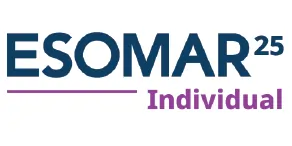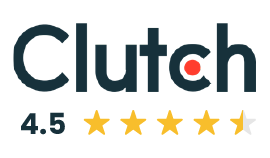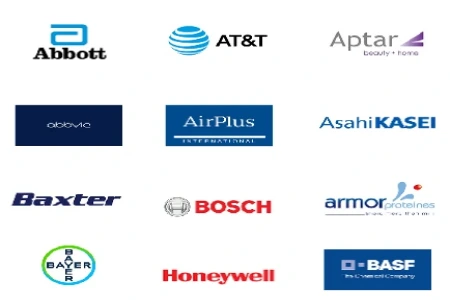Global Deep Brain Stimulation Devices Market is Estimated to Witness Significant Growth Due to Increasing Prevalence of Neurological Disorders and Growing Geriatric Population
The Global Deep Brain Stimulation Devices Market is estimated to be valued at USD 1.50 Bn in 2024 and is expected to exhibit a CAGR of 10.5% over the forecast period 2024-2031. Furthermore, the increasing adoption of DBS devices for the treatment of neurological disorders like Parkinson's disease and epilepsy is also expected to contribute to the market growth.
Market Dynamics:
The growth of the global deep brain stimulation devices market is driven by the increasing prevalence of neurological disorders and growing geriatric population globally. According to the WHO, in February 2024, it is estimated that over 6 million people in the U.S. suffer from movement disorders like Parkinson's disease. Also, over 50 million people suffers from epilepsy worldwide. Growing geriatric population prone to neurodegenerative diseases is another major factor augmenting the demand for deep brain stimulation devices for the effective treatment of these conditions. Furthermore, ongoing technological advancements in deep brain stimulation systems with focus on patient comfort and effective treatment are also expected to support the market growth during the forecast period.
Growing Prevalence of Neurological Disorders Drives Demand for Deep Brain Stimulation Devices
The rising prevalence of neurological disorders such as Parkinson's disease, dystonia, chronic pain, obsessive compulsive disorder (OCD), and epilepsy is a major factor driving the growth of the global deep brain stimulation devices market. According to the Parkinson’s Foundation, about 60,000 Americans are diagnosed with Parkinson's disease each year. Deep brain stimulation has proven to be an effective treatment for motor fluctuations and dyskinesia in advanced cases of Parkinson’s disease. The success of deep brain stimulation in treating Parkinson's symptoms is further fueling the adoption of these devices.
Technological Advancements lead to Improved Accuracy and Precision of Deep Brain Stimulation Therapy
Manufacturers are continuously investing in research and development to develop more accurate and precise deep brain stimulation systems. Advancements such as directional leads and floating electrodes have allowed for the targeted stimulation of specific areas of the brain. Improved neuroimaging and neurological mapping are also helping surgeons target stimulation to exact regions of the brain responsible for various motor and psychiatric symptoms. Personalized programming options enabled by new devices allow for fine-tuning of stimulation parameters according to an individual's symptoms. Such technological innovations are driving the demand for latest generation deep brain stimulation systems with enhanced accuracy and effectiveness.
High Cost of Treatment Acts as Significant Restraint on Market Growth
One major restraint hampering the growth of the deep brain stimulation devices market is the high cost associated with surgical implantation of these devices and long-term therapy involving device replacement and programming. On an average, the total cost of deep brain stimulation treatment ranges between US$ 40,000 and US$ 50,000 in the U.S. This includes the cost of pre-surgical evaluation, surgery to implant the device, device programming, and ongoing adjustments. The cost burden is higher in developing nations where reimbursement is limited. The high upfront costs discourage widespread adoption, restricting the market to some extent.
Lack of Trained Neurosurgeons Poses Challenge in Some Regions
Skilled neurosurgeons with expertise in DBS surgery are limited in number globally, acting as a roadblock especially in developing and underdeveloped regions. DBS implantation requires highly technically skilled surgeons with detailed knowledge of brain anatomy and functioning. The limited availability of trained specialists impacts the number of DBS procedures performed. This is a major barrier in regions with the lack of resources and infrastructure for neurosurgical training. Developing skilled manpower thus remains a key challenge for the market expansion in less developed markets.
Emerging Indications Widen Scope for Deep Brain Stimulation Adoption
Clinical trials exploring the use of DBS in new neurological and psychiatric conditions are identifying potential new avenues for market growth. Promising areas include post-stroke motor dysfunction, Tourette syndrome, treatment-resistant depression, Alzheimer's disease, and neurological pain syndromes. If approved for these emerging applications, it could substantially boost market revenues in future. With numerous ongoing clinical studies, the scope for deep brain stimulation is increasing beyond its established uses. This presents significant commercial opportunities moving ahead.
Growing geriatric population is a Market Opportunity
The rising geriatric population globally is presenting opportunities for the deep brain stimulation devices market. Neurodegenerative conditions like Parkinson’s disease have a strong correlation with advancing age. With an increasing elderly demographic, the prevalence of such neurological disorders is projected to rise markedly in the coming decades. This will correspondingly drive up the demand for effective therapies like deep brain stimulation among the aging population. As people remain active even in their late years, advanced treatment options for improving the quality of life will gain significance. Overall, the expanding senior population base will serve as a positive influencer of future market trends.
Link - https://www.coherentmarketinsights.com/market-insight/deep-brain-stimulation-devices-market-84
Key Developments:
- In September 2024, Abbott, a global healthcare leader known for its innovative medical devices, launched the TRANSCEND study, a pivotal clinical trial to evaluate the efficacy of its DBS system in treating treatment-resistant depression (TRD), a severe form of major depressive disorder
- In September 2024, Medtronic, a pioneer in medical technology, released the trial design and preliminary findings of the ADAPT-PD trial, which focuses on the use of an adaptive DBS algorithm to deliver personalized therapy for Parkinson's disease
- In January 2024, Abbott received the U.S. FDA approval for its Liberta RC DBS system, the world’s smallest rechargeable DBS device. This innovative system features remote programming capabilities and is designed to improve the quality of life for people living with movement disorders
- In January 2024, Medtronic gained the U.S. FDA approval for its Percept RC Deep Brain Stimulation (DBS) system. This rechargeable neurostimulator is the latest addition to the Percept family, which includes SenSight directional leads and BrainSense technology for advanced neurological care.
- In January 2021, Boston Scientific, a leading medical device company specializing in DBS systems, received the U.S. FDA approval for its fourth-generation Vercise Genus DBS System. The portfolio includes Bluetooth-enabled, rechargeable and non-rechargeable implantable pulse generators compatible with Cartesia Directional Leads, designed for optimized symptom relief and approved for conditional use in MRI environments.
Key Players:
Abbott, Medtronic, Boston Scientific Corporation, Neuropace Inc., LivaNova Plc, Renishaw Plc, Aleva Neurotherapeutics S.A., Beijing Pinchi Medical Equipment Co. Ltd, Nexstim, St. Jude Medical (now part of Abbott), Cyberonics (now part of LivaNova), EBR Systems, IntraPace, Nevro Corp, and Stimwave Technologies










